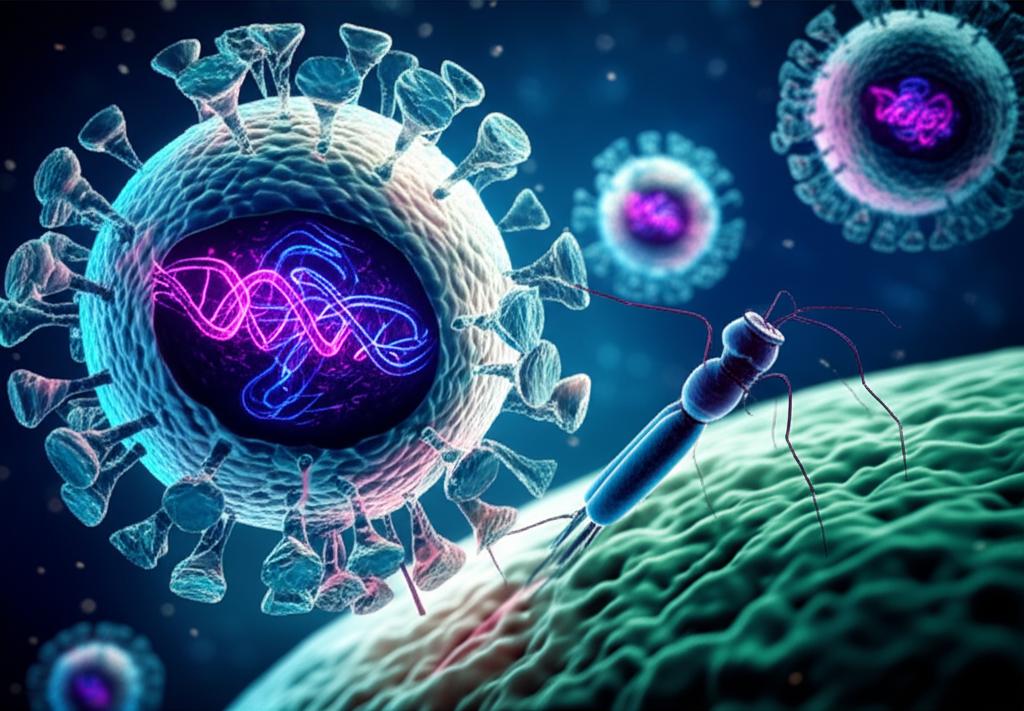Unveiling the Menace: A Comprehensive Guide to Understanding Viruses
In the vast landscape of biology, few entities evoke as much fascination and fear as viruses. These microscopic agents, often on the blurry line between living and non-living, are formidable pathogens that have shaped the course of life on Earth, causing everything from the common cold to global pandemics. But what exactly is a virus, and how does it exert such profound influence?
What Exactly is a Virus?
At its core, a virus is a parasitic entity, an obligate intracellular parasite that cannot replicate or carry out metabolic processes without a host cell. Unlike bacteria, fungi, or protozoa, viruses are not cells; they lack cellular structures, organelles, and the machinery necessary for self-sufficiency. Instead, a virus is essentially a package of genetic material designed for one purpose: to invade a host cell and hijack its machinery to produce more viruses.
- Acellular Nature: Viruses are not made of cells. They lack cytoplasm, organelles, and a nucleus.
- Genetic Material: They possess either DNA or RNA, but never both. This genetic material contains the blueprint for new viral particles.
- Obligate Parasites: A virus must infect a living host cell to replicate. It cannot reproduce independently.
The Minimalist Structure of a Virus
Despite their complexity in function, the structure of a virus is remarkably simple and elegant in its efficiency. Every virus consists of at least two main components:
Genetic Material: The Blueprint
The heart of any virus is its genetic material. This can be either DNA (deoxyribonucleic acid) or RNA (ribonucleic acid), which can be single-stranded or double-stranded, linear or circular. This genetic information carries the instructions for making the proteins needed for viral replication and assembly. The type of genetic material (and its structure) is a key way scientists classify different types of viruses.
The Capsid: A Protective Shell
Encasing the genetic material is a protein shell called the capsid. This structure protects the viral genome from environmental damage and plays a crucial role in attachment to and entry into host cells. Capsids are made up of smaller protein subunits called capsomeres, which assemble in highly symmetrical patterns, giving viruses distinct shapes such as helical (e.g., tobacco mosaic virus), icosahedral (e.g., adenovirus), or complex (e.g., bacteriophage). The integrity of the capsid is vital for a virus to survive outside a host.
The Viral Envelope (Optional)
Some viruses, known as enveloped viruses (e.g., influenza virus, HIV virus, SARS-CoV-2 virus), possess an additional outer layer called the viral envelope. This is a lipid bilayer derived from the host cell membrane during the virus’s budding process, studded with viral proteins called spikes or peplomers. The envelope helps the virus evade the host’s immune system and facilitates entry into new cells, but it also makes the virus more susceptible to detergents and disinfectants.
How a Virus Replicates: A Hijacked System
The life cycle of a virus is a masterclass in cellular hijacking. Once a virus encounters a susceptible host cell, it initiates a series of events to take over the cell’s machinery:
- Attachment: The virus binds to specific receptor molecules on the surface of the host cell.
- Penetration: The virus or its genetic material enters the host cell. This can happen through fusion of the envelope with the cell membrane, endocytosis, or direct injection of genetic material.
- Uncoating: The capsid is removed, releasing the viral genetic material into the host cell’s cytoplasm or nucleus.
- Replication & Gene Expression: The viral genetic material is transcribed and translated using the host cell’s ribosomes, enzymes, and building blocks to produce viral proteins and replicate the viral genome. This is where the virus truly takes command.
- Assembly: New viral genetic material and proteins are assembled into new, complete virus particles.
- Release: The newly formed viruses exit the host cell, often by lysing (bursting) the cell or by budding from the cell membrane (for enveloped viruses), ready to infect new cells.
“A virus is a program, a set of instructions, waiting for a suitable host cell to execute its destructive code. It’s a testament to evolutionary efficiency.”
The Global Impact of Viruses
The presence of viruses in our world is undeniable. They are responsible for a wide array of human, animal, and plant diseases, and their ability to mutate and adapt poses a constant challenge to public health. Throughout history, viral epidemics and pandemics have caused immense suffering and death, significantly impacting societies and economies. Examples include:
- Influenza Virus: Responsible for seasonal flu epidemics and occasional devastating pandemics.
- SARS-CoV-2 Virus: The causative agent of COVID-19, leading to the most significant global pandemic in a century.
- HIV Virus: The human immunodeficiency virus, which causes AIDS, a chronic and life-threatening condition.
- Ebola Virus: Known for causing severe hemorrhagic fever with high mortality rates.
- Common Cold Viruses: A group of viruses, including rhinoviruses and some coronaviruses, causing mild upper respiratory infections.
Combating Viruses: Prevention and Treatment
Our ongoing battle against viruses involves a multi-pronged approach, focusing on prevention, treatment, and public health measures.
Vaccines: Training the Immune System
Vaccination is one of the most effective strategies for preventing viral diseases. Vaccines introduce weakened or inactivated viral components (or genetic material coding for them) into the body, training the immune system to recognize and mount a defense against the actual virus without causing illness. This provides long-lasting immunity and helps achieve herd immunity.
Antiviral Drugs: Targeting Viral Processes
Unlike antibiotics, which target bacteria, antiviral drugs are specifically designed to inhibit various stages of the viral life cycle. These medications can prevent the virus from attaching to cells, replicating its genetic material, or assembling new particles. While effective for some viral infections, developing antivirals is challenging due to the virus’s reliance on host cell machinery and its rapid mutation rate.
Public Health Measures
Simple yet powerful public health strategies, such as hand hygiene, social distancing, mask-wearing, and surveillance, are critical in controlling the spread of viral infections, especially during outbreaks.
The Evolving Threat: Why Viruses Matter
The study of viruses remains a dynamic and crucial field of scientific inquiry. Their ability to rapidly evolve, jump between species, and develop resistance to treatments means that new viral threats are an ongoing concern. Understanding the fundamental nature of a virus – its structure, replication, and interaction with hosts – is paramount for developing innovative strategies to mitigate their impact and safeguard global health.
In conclusion, a virus is a fascinating biological paradox: an inert package outside a host, yet a formidable biological machine once inside. Its minimalist design belies its powerful capacity to adapt and thrive, making viruses a perpetual challenge and a testament to the intricate dance of life and its microscopic invaders.



